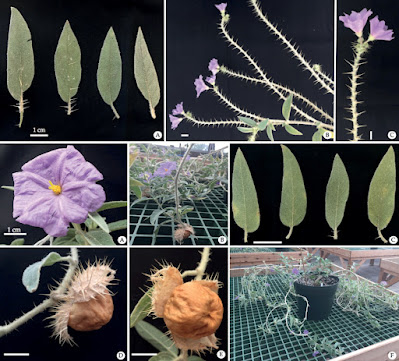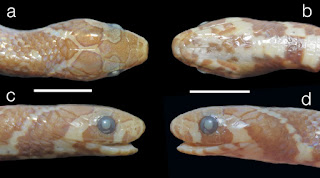--2022_Baleeiro_Gonella__.jpg) |
Utricularia amethystina Salzm. ex Saint-Hilaire & Girard (1838)
in Baleeiro, Gonella, Sano & Jobson, 2022. |
Abstract
The genus Utricularia (Lentibulariaceae) is the most diverse and cosmopolitan among carnivorous plants. Utricularia sect. Foliosa sensu Taylor (1989) is composed of three South American species, U. amethystina, U. tricolor and U. tridentata, the first species being recognized as highly diverse. In his taxonomic revision of the genus Utricularia, Taylor (1989) circumscribed the polymorphic U. amethystina comprising 27 synonyms involving a wide variation in corolla size and colour, morphology of corolla parts, indumentum, and overall plant size. The original publications of the synonyms provide limited information disencouraging a revision study and therefore inflating U. amethystina as new variations were discovered. In order to shed light onto the problem, a taxonomic revision, a morphometric and a molecular study showed evidence of a larger complex than previously thought, and U. amethystina s.str. sister to U. tricolor. A previously published molecular phylogeny provided strong support for all sampled U. amethystina synonyms and potential new taxa found to be nested outside the U. amethystina s.str. and U. tricolor clade. Here, we incorporate these new relationships and describe and comment on the species that comprise U. sect. Foliosa, including the restablishment of six synonyms, the description of three new species and lectotypification of five names. The current study disentangles U. amethystina complex so that further studies can approach it in a more realistic way, especially studies using population genetics tools. Our study shows that more needs to be done and here U. hirtella is presented as a new complex.
Keywords: carnivorous plants, Lamiales, Neotropical biodiversity, new species, taxonomy
Utricularia sect. Foliosa Kamieński,
Lentibulariaceae preprint from Nat. Pflanzenfam. 120 (1891)
TYPE: Utricularia amethystina Salzm. ex A.St.-Hil. & Girard.
(Designated by P. Taylor).
1. Utricularia amethystina Salzm. ex Saint-Hilaire & Girard (1838: 870)
2. Utricularia biceps Gonella & Baleeiro (2018: 215)
3. Utricularia bicolor Saint-Hilaire & Girard (1838: 870)
4. Utricularia chapadensis Baleeiro, Gonella, R.W.Jobson, sp. nov.
5. Utricularia damazioi Beauverd (1907: 703)
6. Utricularia hirtella Saint-Hilaire & Girard (1838: 869)
7. Utricularia lindmanii Sylvén (1909: 26)
8. Utricularia lunaris Baleeiro, Gonella, R.W.Jobson, sp. nov.
9. Utricularia pantaneira Baleeiro, Gonella, R.W.Jobson, sp. nov.
10. Utricularia roraimensis Brown (1901: 54)
11. Utricularia tricolor Saint-Hilaire (1833: 418)
12. Utricularia tridentata Sylvén (1909: 28)
13. Utricularia trinervia Benjamin (1847: 247)
14. Utricularia velascoensis Kuntze (1898: 240)
Paulo C. Baleeiro, Paulo M. Gonella, Paulo T. Sano and Richard W. Jobson. 2022. Unveiling
Utricularia amethystina’s True Colours: A Taxonomic Revision of One of the Largest Species Complexes (
U. sect.
Foliosa, Lentibulariaceae).
Phytotaxa. 576(1); 29–54. DOI:
10.11646/phytotaxa.576.1.2
--2022_Baleeiro_Gonella__.jpg)













--2022_Baleeiro_Gonella__.jpg)
--2022_Baleeiro_Gonella__.jpg)
--2022_Baleeiro_Gonella__.jpg)
--2022_Baleeiro_Gonella__.jpg)






























